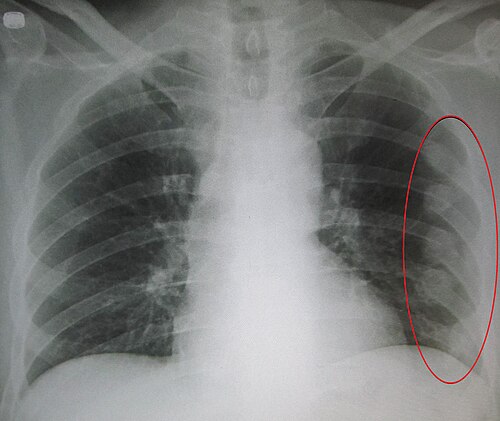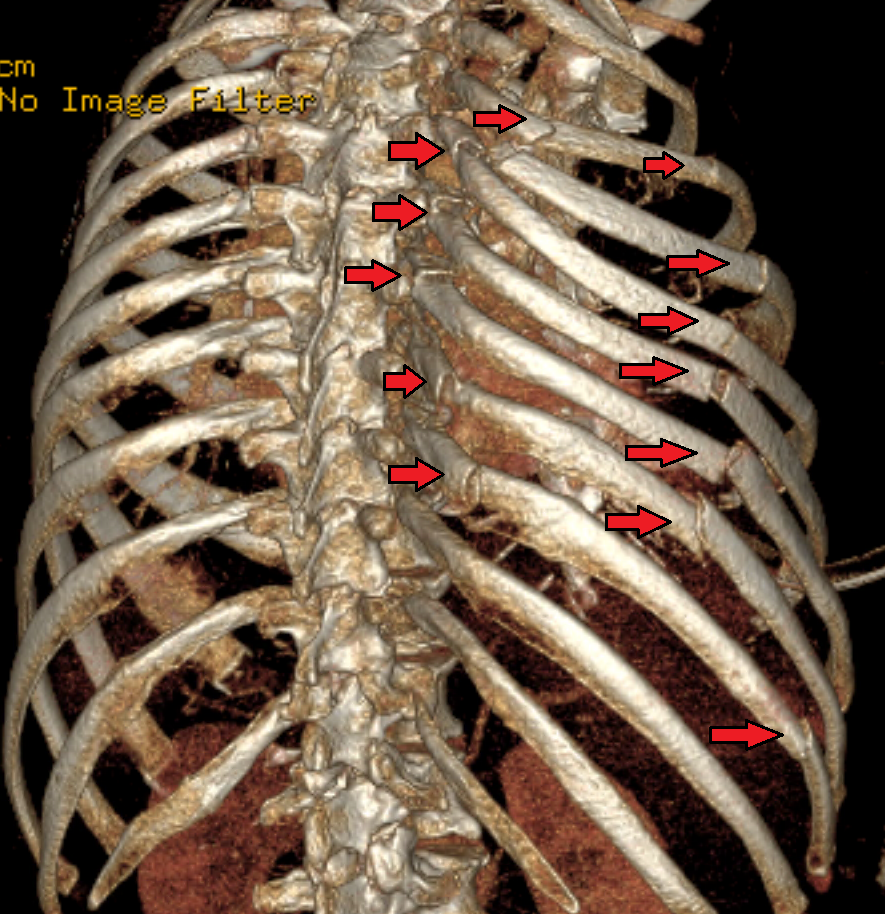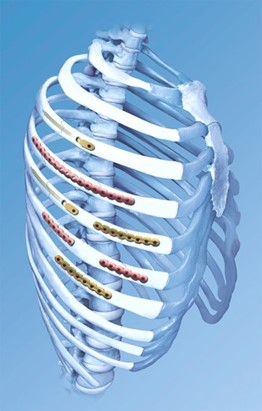
Broken Ribs / Rib Fractures

When doctors talk about fractures, this means exactly the same as a break or a crack.
Rib fractures are very common after falls, car accidents, cycling crashes or sports. In older patients, the risk of fractures is significantly increased by poor bone health. This is very common with vitamin D deficiency when people do not get enough sun exposure. Most people in the UAE do not get enough sun exposure and have associated vitamin D deficiency.
Most rib fractures are undisplaced, meaning the ends are not separated and will heal without needing surgery. If there are displaced rib fractures, or damage to the lung, then surgery might be required. If three or more ribs are broken in two or more places, then a “flail chest” may result, where a segment of the chest moves the wrong way on breathing and is usually a reason for surgery.
Picture from Medline Plus, National Library of Medicine, USA.
Simple (Undisplaced) Rib Fractures
Simple rib and breastbone fractures will heal without surgery or medical intervention. They will normally be stable by six weeks and completely healed by three months, although pain from damage to other parts of the body due to the accident may still continue.
Unlike a broken arm or leg, it is not possible to rest the chest as we need to keep breathing at all times. Splints or chest braces are not helpful as they prevent chest expansion, limiting breathing and increasing the chances of chest infection.
Good painkillers will be needed to make you comfortable and will help to reduce the risk of developing a chest infection. Regular paracetamol / acetaminophen along with ibuprofen if you can take this safely are the main painkillers. Other, stronger ones such as codeine, tramadol, may be available from your doctor if required.
Keeping active and doing deep breathing exercises will also help with recovery and reduce infection risk. Practice taking in a full deep breath and then coughing or blowing out forcefully (huffing) three times every 30 minutes or so, while holding a folded towel or cushion against the area will help keep the chest clear.


Displaced Rib Fractures and Flail Chest Injury
More serious rib injuries will benefit from surgery, where metal plates and screws can be used in an operation to fix the broken ends of the rib together. Not all patients with this problem will need surgery. It should be performed ideally within three and not more than seven days from the injury and after any live-saving surgery has been performed.
Surgery will stabilise the ribs, reducing the pain and improving breathing, but will leave a permanent scar over the affected area.
Chronic Non-Healing Rib Fractures (Non-Union)
If the ends of the rib remain separate and have not healed after three months, then pain on movement at the fracture will continue. Surgery to plate the ends together will significantly reduce the pain and promote healing of the fracture.
Picture: Flailchest3to9.png” by James Heilman, MD is licensed under CC BY-SA 4.0
King’s College Hospital in Dubai Hills offers consultation for chest injuries and internal rib fracture fixation surgery if required.
Dr. James Douglas Aitchison has performed multiple such operations both emergency and for later fixation of problematic rib and breastbone (sternal) fractures.
Picture of MatrixRIB fixation system by DePuy Synthes

